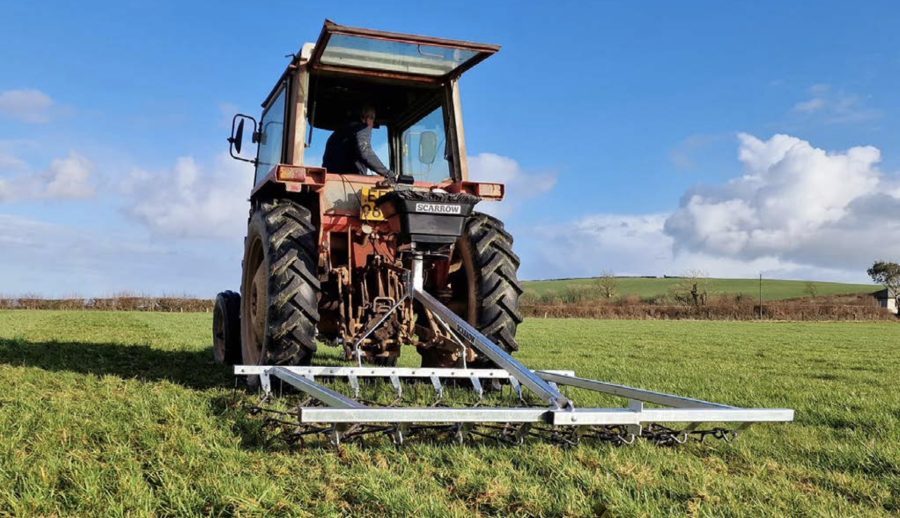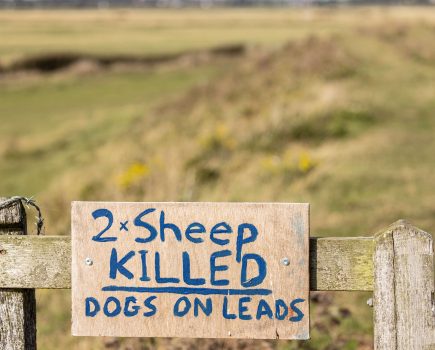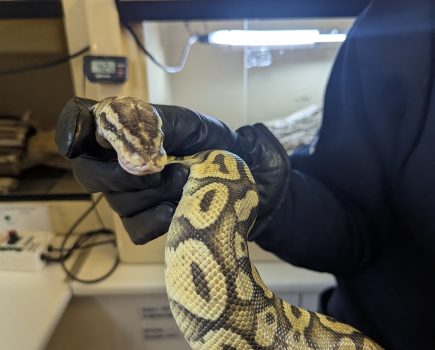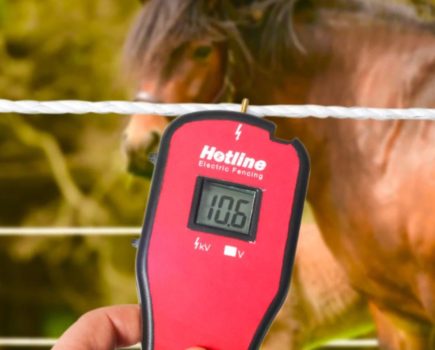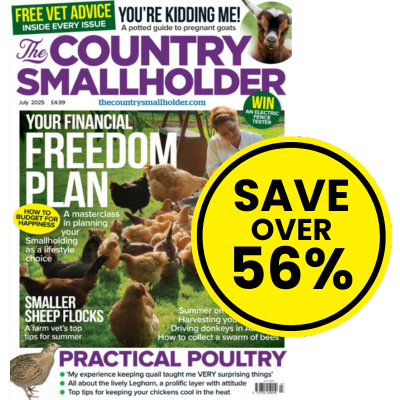Jeremy Burgess explores the option of overseeding pasture and meadows, when to consider it and how to go about the process.
Enhancing or re-vitalising pasture has traditionally been achieved with a full re-seed. This begins by killing off existing vegetation with Glyphosate followed by
ploughing, then working down a seedbed before sowing a new commercial grass seed mix and rolling to consolidate. Prior to this, soil samples are sent to a laboratory for analysis and the nutrient and Ph value of the soil corrected accordingly by liming and fertiliser. The motivation generally being to maximise grass yields, for instance on a commercial dairy farm. The total re-seeding operation having significant environmental impact in both fuel used and chemicals applied. Once completed the newly seeded area cannot normally be grazed or mowed for several months. Overseeding however is a much easier and lower
cost process with significant advantages over a full re- seed. The cost is lower, the equipment required more basic, the Co2 produced is significantly less, no chemicals are used and after a short interval the area concerned can be returned to use. Basically re-seeding is a ground zero approach with completely new
grass whereas overseeding adds to and compliments what is already there.
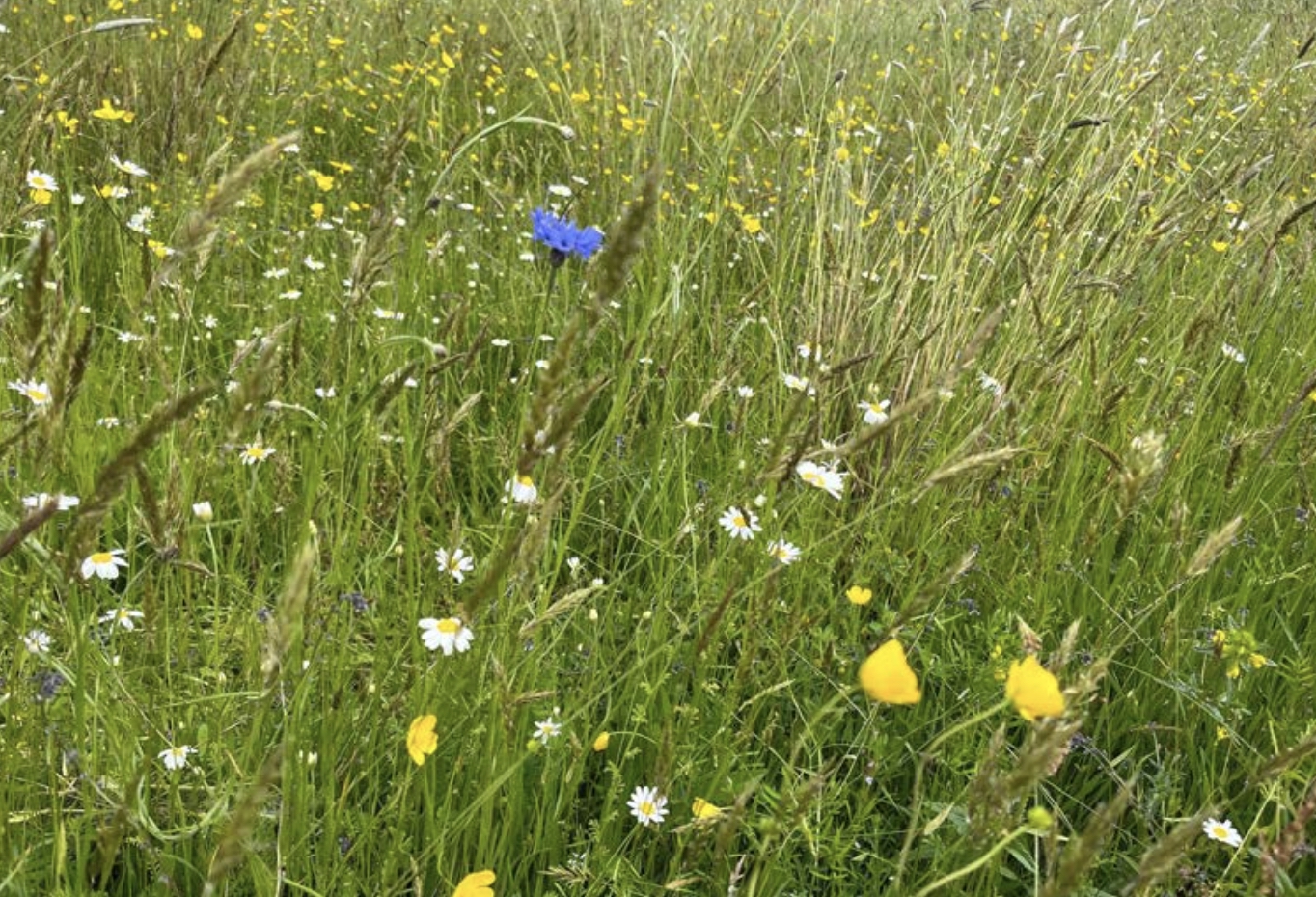
REASONS FOR OVERSEEDING
There are several reasons and scenarios where over-seeding should be considered. If grass yield is important for grazing or haymaking then existing pasture can be re-invigorated by adding a new seed mix, for instance containing White Clover, Rygrass and Ribgrass.
Many commercial farms are now using overseeding as part of their grassland management regime and a number of different seed mixes and specialist machines are now available to facilitate this. Another reason to consider overseeding is to enrich a pasture by adding a herbal mix to the sward. This can
have both nutritional and health benefits to horses and livestock, typical contents of a herbal overseed mix include Sheeps Parsley, Sainfoin, Fenugreek and Ribgrass.
Herb rich pasture and subsequent hay produced is more tasty and palatable for livestock as well as providing natural health benefits. The fact that overseeding adds to the existing plant population rather than destroying it makes it an ideal technique to add herb species to pasture.
An increasingly popular application for overseeding is to establish or enhance a wildflower meadow. The introduction of Sainfoin, Oxe-eye Daisy and Yellow Rattle amongst others both improves the appearance of an area of grassland and also enhances a wide range of wildlife and nature. Establishing a wildflower meadow is however probably the hardest to achieve as balancing successful wildflower establishment with the competition of native grass is sometimes very difficult. Yellow Rattle is particularly useful at suppressing grass and allowing the wildflowers to establish with less competition.
| MIXED HERBS FOR LIVESTOCK AND THEIR BENEFITS: |
| Sainfoin is a natural wormer and a good source of condensed tannins which aid the digestion of protein. It is high in Omega-3 fatty acids which improve the resilience of the immune system. Sainfoin hay, also known as ‘holy hay’ or ‘healthy hay’, is low in sugar and starch and is particularly suitable for horses on a strict diet. Sheeps Parsley is high in iron and vitamins A and C. It is useful to alleviate the symptoms of kidney and bladder complaints. Sheeps Burnet, or Salad Burnet, is drought tolerant with a long growing season. It is highly nutritious and an excellent source of trace elements. Ribgrass is a fast-growing, long-lasting herb, and a rich source of calcium and selenium. It helps maintain a healthy digestive system and its leaves are high in anti-inflammatory compounds making the herb effective for all types of inflammation. Fenugreek is a valuable digestive tonic aiding the digestive system in making better use of available food. It is highly nutritious and a good source of protein and fat. |
Once a wildflower meadow has been established it requires maintenance and management, overseeding is a particularly useful tool in the on-going development of a wildflower meadow as the seed bank can be topped-up periodically or new species added in subsequent years.
The ability to add to what is there rather than destroying and starting again being particularly relevant. Overseeding has come into focus more than ever this year as a means of establishing the grass, legume and herbal leys as defined by the Sustainable Farming Incentive ( SFI). If you are a registered holding, it may be worth contacting DEFRA to determine if your overseeding qualifies for any payments under the SFI scheme.
WHEN TO OVERSEED
In the British Isles and Northern Europe, overseeding can be carried out between March and late September, provided soil temperatures are above 8ºC. However the most appropriate time for overseeding is late August through to mid October after the existing growth has been removed by grazing or cropping for hay. The slower growth of the existing plant population in late Summer also allows new. seeds to establish with less vigorous competition. Heavier. dews often tend to occur in late Summer which are a useful source of moisture for new seed in the absence of rain.
Generally, as a guide to grassland management, the Spring months are best for maintenance such as harrowing and aeration, whereas the late Summer months are preferred for enhancement, restoration and rejuvenation as shown in the table below:

WHAT SEED TO SOW
Knowing the soil characteristics you have is very valuable information and will help select the grass, herb or wildflower mix best suited to your land. For maximum grass yield a soil Ph of minimum 6.2 is needed for grass and 6.5 is recommended for clover.
Correcting this by liming is advised in preparation for overseeding. Likewise nitrogen, phosphate and potash levels are also important for grass growth. Soil analysis is simple and the costs modest. A basic laboratory soil test covering Ph, phosphate and potash will cost in the region of £25 and this is normally sufficient, however for those requiring more information a complete analysis of all key minerals will cost approximately £50.
Your local agricultural supply merchant can usually arrange for soil samples to be sent for analysis and give guidance on the sampling process itself. Keeping records of soil samples over a number of years is an interesting way to monitor the impact of your chosen management regime even if that is a minimal input
approach.
In the case of wildflower meadows, soil which is too fertile can significantly hamper establishment as the new plants are out-competed by grass. Knowing your start point in terms of soil nutrients is important and it may be sensible to reduce soil fertility by removing surface vegetation by hay making or mechanically
with a flail collector for a couple of years before attempting to establish the flower seeds.
Seed supply can be obtained from a number of sources, several national suppliers are active on-line and usually show a breakdown of the seed mixes they sell to allow you to optimise the mix best suited to your needs. Local seed merchants are well worth seeking out as they can offer advice based on knowledge of your area, soil type and climate and can sometimes create a bespoke seed mix specifically for you.
To determine the quantity of seed to buy for overseeding a guide is 12 to 15 KG per Ha for grass mixes. Wildflower seed should be applied at the rate recommended by the supplier however it may be worth seeding in patches to. create a more natural random. appearance to the meadow.
If using home-saved seed, particularly in the case of wildflowers this should be cleansed of as much chaff and leaf residue as possible to allow it to flow through the broadcaster without blockages.
HOW TO OVERSEED
When considering the equipment and techniques to use for overseeding it is worth going back to basics and reminding ourselves what conditions we are aiming to create to allow new seed to establish and thrive.
The key principles are:
- Bare but not deeply cultivated or disturbed soil. As a guide around 50% bare area when looking directly. down into the sward. Most grass, herb and wildflower seeds should be no more than 3 to 5 mm deep when sown.
- Moist but not wet soil.
- Soil temperatures of at least 8 degrees C.
- Good seed to soil contact. The best seed distribution method is to broadcast on the surface rather than to drill it in channels as this often results in. seed being placed too deep and failing to germinate. However grass, herb and wildflower seed is very small and light and broadcasting should not be attempted in conditions of strong wind as this will significantly disrupt the even. distribution of seed.
In terms of equipment for overseeding a number of manufacturers such as Einbock and Hatzenbichler offer specially engineered equipment for overseeding, these both scarify and apply seed but are typically priced at £15000 upwards and whilst offering high output rates are only justified by large scale farms and contractors. For the smallholder or small-scale landowner there are however some alternatives.
To create areas of bare soil a chain harrow can be used though these are often not aggressive enough and do not produce the required scarifying effect. Small tined harrows are also available but tend to be very lightweight and do not penetrate sufficiently to produce the bare but uncultivated conditions we are aiming for. It was this situation that lead to the development of the Scarrow by Devon based Tractek Engineering. The Scarrow combines scarifying tines with a traditional chain harrow mat, the tines penetrating better due to the weight of the harrow chain whilst the chain harrow itself continues the opening up of the sward initiated by the tines. The Scarrow is a versatile machine which is used for both Spring maintenance including the repair of damaged areas after winter and with the addition of the purpose designed seed spreader is the perfect solution for overseeding. The Scarrow requires a tractor of only 20hp or more and a trailed version for use with a quad bike or ATV is under development.
Once the equipment has been selected, seed obtained and the conditions are suitable the operation can begin. Each field and area of ground is different and a trial run will show how close you are to the desired levels of bare soil on the first pass. Typically at least two passes are required the second perpendicular to the first to produce the best results. Often a third pass with a machine like the Scarrow with the seed broadcaster switched on will give optimal results.
Stopping after each pass and examining the results will indicate if more passes are required. If a combined harrow/seeder is not available then a separate pass with a seed broadcaster after scarifying can also be used.
Once the bare ground has been created and the seed has been spread, the final part of the establishment jigsaw is to provide sufficient seed to soil contact. A pass with a lightly ballasted flat roller is normally sufficient to firm in the seed and press it into the soil but not deeply. Think of re-creating the effect of treading it in with your foot.
Having completed the operation emergence of new seed should be seen within two to three weeks though full results will not be seen until the following Summer. Do not be tempted to graze or mow too soon to allow the new plants to establish.
PRACTICAL AND EFFECTIVE WAY TO IMPROVE GRASSLAND
In summary, overseeding is a practical and effective way to improve, enrich and enhance grassland whatever your motives. The technique is quick, easy, chemical free and produces minimal emissions. With new equipment such as the Scarrow now available, overseeding is very achievable for the smallholder and small-scale landowner.
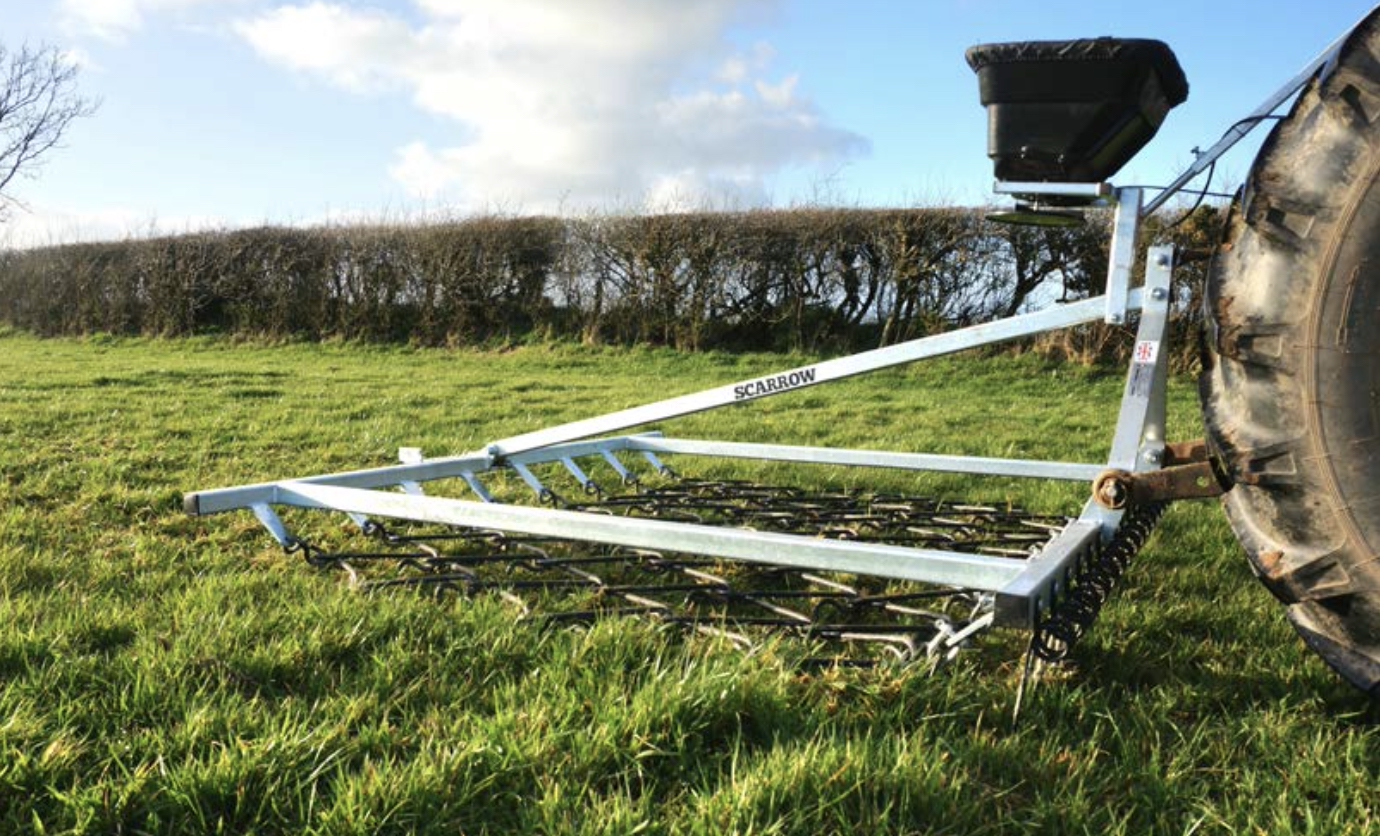
ABOUT THE AUTHOR
Jeremy Burgess is a professional Agricultural Engineer and mechanisation advisor with over 40 years experience in many countries of the World. He has a small farm in South Devon and operates a contracting service specialising in establishment and maintenance of traditional meadows.
To receive regular copies of The Country Smallholder magazine featuring more articles like this, subscribe here.
For FREE updates from the world of smallholding, sign up for The Country Smallholder newsletter here.

